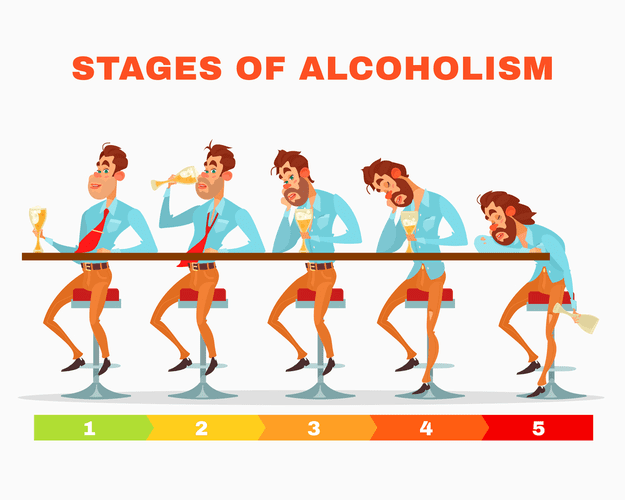Understanding cognitive dissonance can help you recognize when you’re justifying actions that don’t align with your true values—and give you tools to change. By implementing these strategies, individuals in recovery can effectively manage cognitive dissonance and move towards a more harmonious and fulfilling life in sobriety. Individuals may attempt to reduce cognitive dissonance by changing their beliefs, modifying their behavior, or rationalizing their actions.
Cognitive Dissonance Therapy: A Beacon of Hope
But it can also be a powerful motivator for change, pushing us to resolve these internal conflicts and restore balance. The idea of cognitive dissonance, as developed by Festinger, provided a framework for understanding how individuals respond to conflicting information and has shaped subsequent research in psychology. According to Festinger’s theory, individuals experience cognitive dissonance when they encounter information or experiences that challenge their existing beliefs, attitudes, or behaviors. This discomfort motivates them to seek out ways to restore consistency within their cognitive framework. Festinger proposed that people can reduce cognitive dissonance by changing their beliefs or attitudes, seeking out new information that supports their existing beliefs, or minimizing the importance of the conflicting information. Cognitive dissonance itself is not considered a mental health condition, but rather a natural and common psychological phenomenon that arises when individuals experience conflicting beliefs, attitudes, or behaviors.
Medication for Weed Addiction: Effective Treatment Options and Support
Cognitive dissonance may manifest in subtle or obvious ways, depending on the individual and the conflict they are experiencing. Cognitive dissonance in a way is mental illness within itself, and without treatment, Drug rehabilitation the chances of relapse are high, and most importantly, it exacerbates an individual’s condition and hinders their chances of a successful recovery. For example, the thought “I value kindness” paired with the action “I just punched someone in the face” is going to bring on some pretty strong feelings of regret, guilt, and disappointment. Dissonance feels like having one foot on one boat and the other foot on another boat. As the two boats, as our actions and beliefs, drift further apart, we get increasingly more uncomfortable.
Tip 4: Practice mindfulness

Or you may decide to work overtime or sell some other items to make up for the fact that you strayed from your budget. This concept implies that you’re more likely to seek out information that confirms what you already believe, and tune out information that contradicts your beliefs. For instance, if you believe a celebrity is a bad person, you’ll likely pay more attention to new stories that cover them unfavorably.
- Heather offers in person sessions in Guelph ON and online session for people from Ontario.
- Consequently, we suggest that framing dissonance reduction as emotion regulation is the first constructive step toward building a general model.
- You may strongly believe that being productive and doing well in your career is a priority in life, but you continually find yourself taking breaks to scroll on social media or chat with coworkers.
- BetterHelp is an online therapy service that matches you to licensed, accredited therapists who can help with depression, anxiety, relationships, and more.
- If conflicting beliefs are driving your dissonance, you can take steps to change your perspective.
Cognitive Dissonance – The Battle Between What We Think, Feel, and Do
These justifications serve to ease the cognitive dissonance, allowing the addicted individual to continue their behavior without confronting the stark reality of their situation. Yes, unresolved cognitive dissonance can cause long-term stress and discomfort. Addressing dissonance helps you maintain mental balance and reduce stress. By aligning your actions with your values, you can create mental harmony and live a more balanced life. For example, a study may test two groups—one exposed to conflicting beliefs and the other not. The control group allows researchers to observe the effects of dissonance theory and identify patterns in reducing dissonance.

Given that interpretations of stimuli likely vary both across persons and situations, the appraisal framework opens up new ways of understanding individual and situational differences in dissonance detection. Several theorists have also pointed to motivations other than consonance restoration that may underlie dissonance reduction. Beauvois and Joule (1996, 1999) argue that the reduction process is about rationalizing a prior commitment to a behavior rather than restoring consonance. The self-affirmation viewpoint (Steele and Liu, 1983; Aronson et al., 2019) suggests that dissonance reduction functions as a way of restoring one’s self- image. Finally, the self-consistency model (Aronson, 1969, 1992, 1999) holds, as does the original theory, that people seek consonance, however only when cognitive conflicts threaten self-integrity. In addition to therapy, support, and counseling from Lantana are essential components of addiction recovery.

This is an example of holding conflicting beliefs, where someone knows smoking is harmful but continues to do it. If you know smoking can lead to cancer but choose to smoke anyway, your behavior can be considered inconsistent with your knowledge. This is a case of two conflicting beliefs where cognitive dissonance treatment someone’s desire to smoke conflicts with their knowledge of its dangers.
- As established, dissonance is a lack of agreement between thoughts, feelings, and behaviors.
- Therapy, especially cognitive behavioral therapy (CBT), can help individuals reduce dissonance by exploring and resolving conflicts between thoughts and actions.
- Cognitive dissonance can manifest in various areas of life, including relationships, career choices, personal values, and moral beliefs.
- Because you are being pressured to comply by outside forces, you are more likely to experience some degree of dissonance.
- Addressing these conflicts alleviates these feelings, providing mental relief.
This cognitive dissonance often leads to a cycle of self-doubt and emotional turmoil, affecting their overall mental health. Since these strategies imply that the individual managed to somehow resolve the situation, a full-blown negative emotion is unlikely to have evolved (or is at least unlikely to still be present). As for restructuring strategies, the individual will likely be at peace and experience a feeling of content and relaxation after employing strategies that manage to resolve dissonance without having to fundamentally change their cognitive structure. Cognitive dissonance plays a significant role in the recovery process for individuals with addiction. It is the internal conflict that arises when a person holds conflicting beliefs, attitudes, or behaviors.
Reach out now and join our supportive
The dissonance experience does not seem to be characterized by one specific emotion, affective state, or pattern of emotions–since people vary in their interpretation and subsequent emotional reaction. Note that this demonstration is simply meant for the above-mentioned purpose (and thereby illustrating the feasibility of the emotion-regulation perspective)–not as a test of the model presented earlier. Throughout this paper, we make the point that dissonance reduction is a form of emotion regulation. The purpose is to provide an encompassing model that also highlights both the role of specific emotions (or clusters of emotions) and the role of individual differences in emotion regulation in order to predict how people might reduce dissonance. Professional therapy helps individuals explore and understand the root causes of cognitive dissonance.
The most common experimental paradigm in dissonance research is the induced-compliance paradigm, in which individuals are asked (under the perception of free choice) to write a counter-attitudinal essay. A well-known effect of inducing dissonance this way is that people tend to change their attitude as a way of reducing dissonance. That is, they become more positively tuned to something toward which they previously held a negative attitude (Festinger and Carlsmith, 1959).
